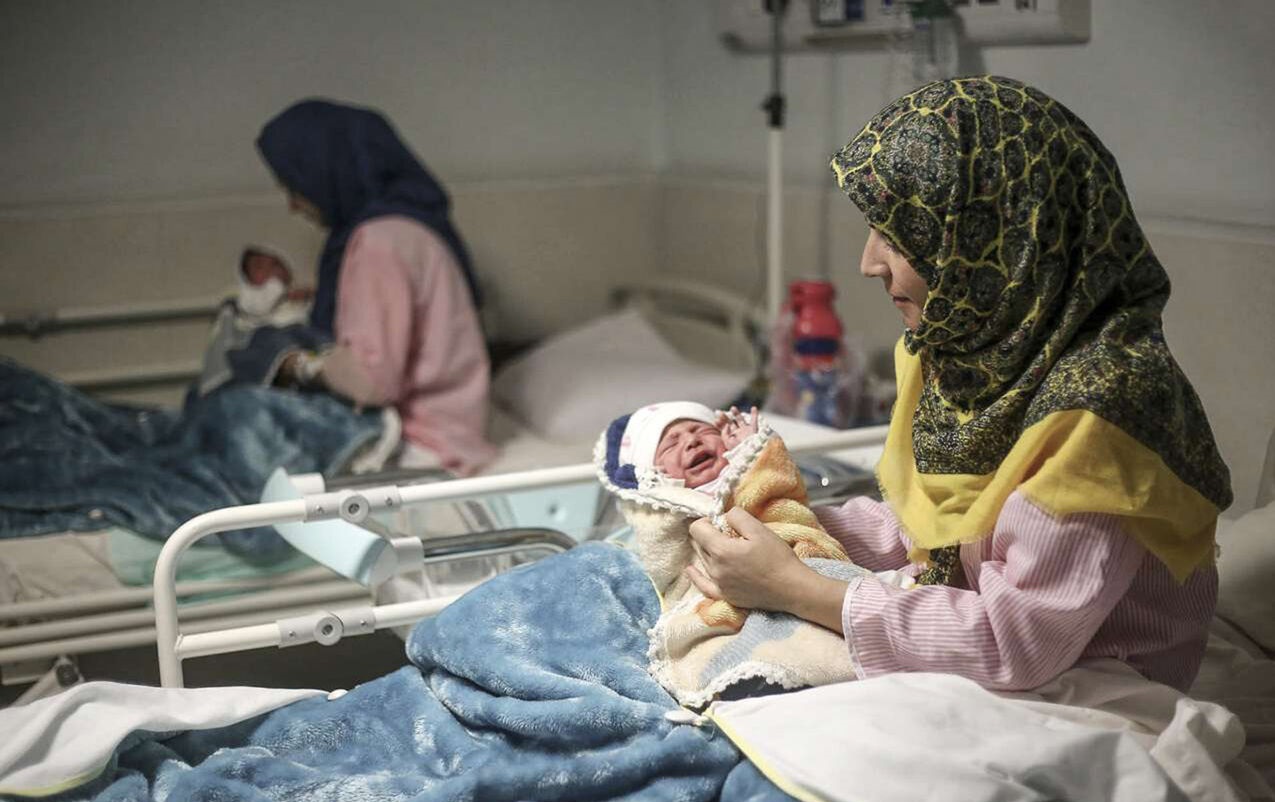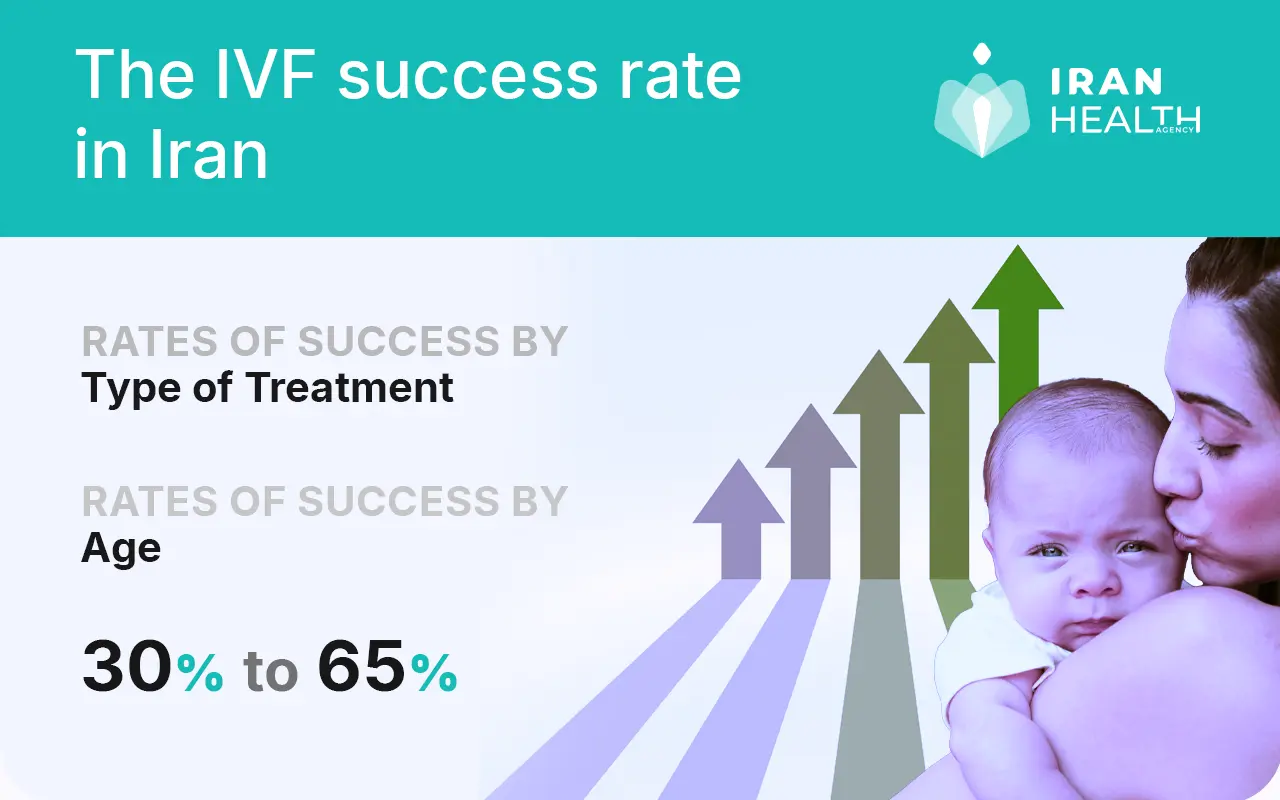When people talk about the fertility rate in a place like Iran, it often sparks thoughts about how families grow and what it means for a community's future. It's a topic that touches on very personal experiences of having children, but also has wider implications for how societies change over time.
This idea of a "fertility rate," when you think about it, is just a way of counting how many babies are being born in a certain group of people. It helps us see patterns, so, in some respects, it gives us a picture of population changes.
To really get a grip on what a fertility rate means, we need to understand the very basic things about how life begins, and what helps or hinders people from having children. It's about understanding the natural process of making a family, and the challenges that can come up for individuals and couples, you know.
- Alexa Bliss Wrestling Accomplishments
- Jayne Marie
- Rumer Willis Age
- Donald Swayze
- James Mccartneys Personal Life
Table of Contents
- What Does Fertility Really Mean for the Fertility Rate in Iran?
- Understanding the Body's Natural Rhythms for the Fertility Rate in Iran
- When is Having Children a Challenge for the Fertility Rate in Iran?
- What Are Some Common Reasons for Conception Difficulties for the Fertility Rate in Iran?
- How Can Support Systems Help with Fertility Rate in Iran?
- What Kind of Help Do Fertility Care Providers Offer for the Fertility Rate in Iran?
- Looking at the Bigger Picture of Fertility Rate in Iran
- Connecting Individual Journeys to the Fertility Rate in Iran
What Does Fertility Really Mean for the Fertility Rate in Iran?
When folks talk about fertility, it can mean a couple of different things, and it's helpful to sort that out. In everyday conversations, fertility often refers to a person's or a couple's natural power to create a new life through usual romantic connections. It's that basic, fundamental capacity to have children, that is that, when people speak in a casual way.
However, when we look at it from a wider viewpoint, like when we talk about something like the fertility rate in Iran, the meaning shifts a little. In these broader discussions about groups of people, fertility isn't just about the physical capability to have children. Instead, it refers to the actual number of children that are born. It's about the real-world outcomes, you know, the babies who arrive, rather than just the potential for them to be born.
- γεωργία τέιτουμ κόνικ
- Rupert Grint Girlfriend
- George Straits Sons Current Status
- Did Whitney Houston Died
- Death Whitney Houston
So, when we consider a country's fertility rate, we are actually counting the total number of new lives brought into the world within a certain population. This measurement gives us a general idea of how a population might be changing, or how it is being refreshed, in some respects. It's quite different from just talking about one person's ability to have children, as a matter of fact.
It's also worth noting that, generally speaking, if a couple is healthy and able to have children, a good number of them, perhaps around ninety percent, will likely get pregnant within a year of trying. This gives us a kind of baseline for what is usually expected when we consider the overall ability to have children in a group of people, basically.
Understanding the Body's Natural Rhythms for the Fertility Rate in Iran
To really grasp how a fertility rate works for a place like Iran, it helps to know a bit about how the human body functions when it comes to having children. For women, this involves understanding the regular changes that happen in their bodies, particularly during puberty and then through their monthly cycles. It's about recognizing the pattern of things, you see.
Knowing how a woman's reproductive system operates is also very important. This includes how the different parts work together to prepare for and potentially carry a new life. It's a bit like understanding how a complex machine works, where each part has its own job, and they all need to be in good working order for the whole thing to run smoothly, naturally.
Beyond just the specific parts of the reproductive system, a person's overall physical well-being and general health play a really big part too. Things like how well someone eats, how much they move their body, and even how they manage stress can all have an effect on their body's ability to create a new life. It’s pretty much about the whole person, and how they are feeling, overall.
If someone is looking to boost their chances of getting pregnant, it really helps to have a good grasp of how the monthly cycle and the release of an egg from the ovary work. When you understand these natural processes, you can time things better and, in a way, give yourself the best possible opportunity for conception. It's about being informed and prepared, you know, for the journey of trying to have a baby.
When is Having Children a Challenge for the Fertility Rate in Iran?
It's a really common experience for people who want to start a family to find that it doesn't happen as easily as they hoped. When you're ready to have children, and you've been trying for a while without success, it can feel incredibly overwhelming, and that's a very real feeling. This kind of difficulty is often called "infertility," which just means not being able to get pregnant after a certain amount of time of trying.
Generally speaking, if a woman has been having regular, unprotected romantic connections for at least a year and hasn't become pregnant, she is usually considered to be experiencing this challenge. For some, it's a condition where the reproductive system simply prevents the making of children. It’s a bit like a door that won’t open, even though you are trying the handle, so.
The ability to get pregnant is, quite simply, what we mean by female fertility. When that ability isn't there, or when it's greatly reduced, it becomes a hurdle for individuals and couples who are hoping to welcome a new member into their family. It’s a condition that affects many people, and it’s important to remember that they are not alone in this experience, actually.
So, when we consider the broader picture, like the fertility rate in a country such as Iran, these individual stories of difficulty in having children contribute to the overall numbers. The rate reflects not just those who can have children easily, but also the presence of these challenges across the population, which can influence the total number of births, you know, in the long run.
What Are Some Common Reasons for Conception Difficulties for the Fertility Rate in Iran?
When someone is finding it hard to get pregnant, there are several common reasons that might be at play, and it’s helpful to know what some of these are. One set of issues relates to problems with the release of an egg from the ovary, which are often called ovulatory disorders. If an egg isn't released regularly, or at all, then getting pregnant becomes very difficult, obviously.
Another common reason can be a condition called endometriosis. This is where tissue similar to the lining of the womb grows outside of it, which can cause pain and also make it harder to get pregnant. It’s a physical condition that can interfere with the body’s natural processes for conception, you know, in a significant way.
It's also important to remember that having children is a shared effort, and sometimes the reasons for difficulty can involve the male partner. For example, a low count of sperm can make it harder for conception to happen. It's a factor that needs to be looked at, just like other potential causes, when a couple is trying to figure things out, as a matter of fact.
Beyond these specific issues, a range of other things can influence a person's ability to have children. These can include a woman's age, as fertility naturally changes over time, or the overall quality of eggs or sperm. The body's ability to carry a baby to term is also a factor, so, basically, there are many pieces to this puzzle when we consider the various aspects that can affect a fertility rate, even in a place like Iran.
How Can Support Systems Help with Fertility Rate in Iran?
When people are facing challenges in having children, having good support systems can make a real difference. These systems are there to help individuals and couples understand what's happening with their bodies and explore options for making their family dreams come true. It's about providing a helping hand when things feel tough, you know, and sometimes a bit confusing.
For many, this support comes from specialized places that focus on helping people with their ability to have children. These places often have teams of medical professionals who work together to look at all aspects of a person's situation. Their way of working is often quite broad, bringing together different kinds of knowledge to offer help that really fits each person's particular needs, so.
The goal of these support systems is to help people overcome the hurdles that prevent them from becoming parents. It's about offering ways to address specific issues that might be making it hard to get pregnant, or to carry a pregnancy. This kind of help is pretty much about giving people the best possible chance to welcome children into their lives, which, in turn, can influence the overall fertility rate in a community, or a place like Iran, for instance.
When someone is trying to grow their family and finds themselves struggling, knowing that there are people and places ready to assist can ease a lot of the worry. It’s about not having to go through it alone, and getting expert advice and care. This kind of care helps individuals understand their situation better and find a path forward, which is very important for their well-being.
What Kind of Help Do Fertility Care Providers Offer for the Fertility Rate in Iran?
Care providers who focus on helping people have children offer a whole range of ways to assist. They aim to give very personal care, meaning they look at each person's unique situation and tailor their suggestions accordingly. It's not a one-size-fits-all approach, you know, but something that is very much about the individual.
These places can offer various ways to help with getting pregnant. This might include services like egg donation, where an egg from another person is used, or even surrogacy, where another person carries the pregnancy for the couple. These options provide paths to parenthood for those who might not be able to have children in other ways, so, in some respects, they widen the possibilities.
They also often provide support for all sorts of family structures, including those in the LGBTQ+ community, ensuring that everyone who wishes to start a family has access to the help they need. This makes the path to parenthood more open and available to a wider group of people, which is quite important for a community's overall well-being, and could certainly play a part in the fertility rate in Iran.
These care providers also help people understand the details of their situation, giving them estimated costs and allowing them to connect quickly with the right professionals. It’s about making the process as clear and straightforward as it can be, so people feel supported and informed every step of the way. They help people find the right kind of care that fits their specific needs, basically, which is a very big deal for many.
Looking at the Bigger Picture of Fertility Rate in Iran
When we consider something like the fertility rate in a country, say, Iran, we're really looking at how all these individual experiences of trying to have children add up. It’s a way of measuring the collective capacity of a population to grow and renew itself. This larger view helps communities and governments understand trends and plan for the future, you know, in a broad sense.
The overall fertility rate is influenced by so many things, from individual health to available support systems. It's a complex picture, where the personal journeys of countless people contribute to a single number that tells a story about a society. It's not just about biology, but also about how easy or hard it is for people to access help and make choices about their families, which is pretty much the essence of it.
Understanding what fertility means, what can make it challenging, and what kinds of help are out there, gives us a better way to think about these larger population numbers. It helps us see beyond just the statistics to the real lives and hopes of people who want to have children. This perspective is really important for getting a full grasp of what a fertility rate truly represents, as a matter of fact.
So, while the term "fertility rate" might sound a bit formal, it’s deeply rooted in the very human desire to create and nurture new life. It brings together the personal and the public, showing how individual choices and circumstances come together to shape the demographic story of a place, like the fertility rate in Iran, for instance.
Connecting Individual Journeys to the Fertility Rate in Iran
Every single person’s path to becoming a parent is unique, and these personal stories are what build up the overall picture of something like the fertility rate in Iran. Whether someone is easily able to get pregnant or needs a lot of help, each experience contributes to the bigger number. It’s a very personal journey that collectively shapes the future of a community, you know, in a profound way.
The ability to have children, or the challenges that can come with it, are not just medical issues; they touch on hopes, dreams, and family plans. When we talk about a country's fertility rate, we are, in a way, talking about the sum of all these deeply personal aspirations and the realities people face when trying to start or grow their families. It's a truly human story, basically, reflected in numbers.
By understanding the definitions of fertility, the factors that influence it, and the support available, we can look at a term like "fertility rate in Iran" with more insight. It helps us appreciate that behind every statistic are individuals and couples, each with their own story of trying to bring new life into the world. It’s about seeing the people behind the data, and what they are experiencing, too it's almost.
Related Resources:



Detail Author:
- Name : Estel Fahey
- Username : foster44
- Email : ona.senger@gmail.com
- Birthdate : 1988-11-16
- Address : 78572 Mills Mills Apt. 926 South Destany, NY 29791
- Phone : +15179042961
- Company : Hartmann, Murphy and Luettgen
- Job : Chiropractor
- Bio : Unde sunt aut sint atque in commodi ut ipsa. Fugiat et quia placeat accusantium qui atque. Qui quia mollitia dolores in eveniet. Libero sapiente assumenda rerum deserunt quis.
Socials
twitter:
- url : https://twitter.com/karlee3181
- username : karlee3181
- bio : Impedit quia officiis magnam quaerat porro. Modi sint laboriosam et. Eveniet perferendis aut dolores reprehenderit quo.
- followers : 1765
- following : 1983
linkedin:
- url : https://linkedin.com/in/karlee7373
- username : karlee7373
- bio : Ut eos reprehenderit est vero.
- followers : 468
- following : 768
instagram:
- url : https://instagram.com/karlee.grimes
- username : karlee.grimes
- bio : Nam ipsa dolore perferendis iste. Ut maiores reprehenderit cum.
- followers : 6056
- following : 2762
tiktok:
- url : https://tiktok.com/@karlee_dev
- username : karlee_dev
- bio : Sed id facere ea sint repellat.
- followers : 6038
- following : 618
facebook:
- url : https://facebook.com/karlee_grimes
- username : karlee_grimes
- bio : Officia id quod placeat consequuntur commodi qui facilis.
- followers : 1592
- following : 2844